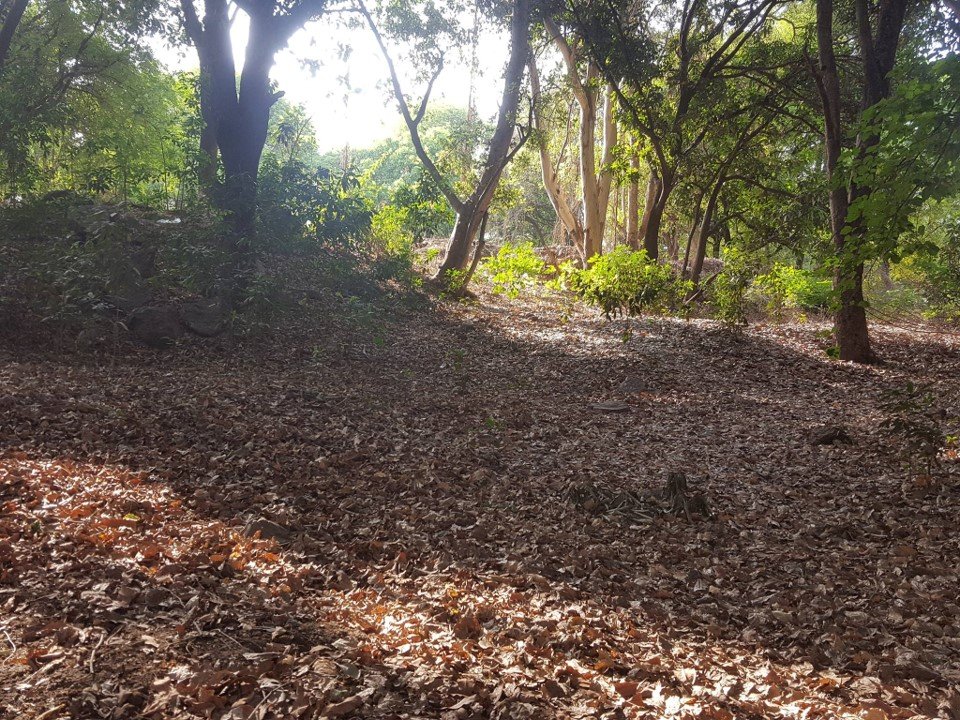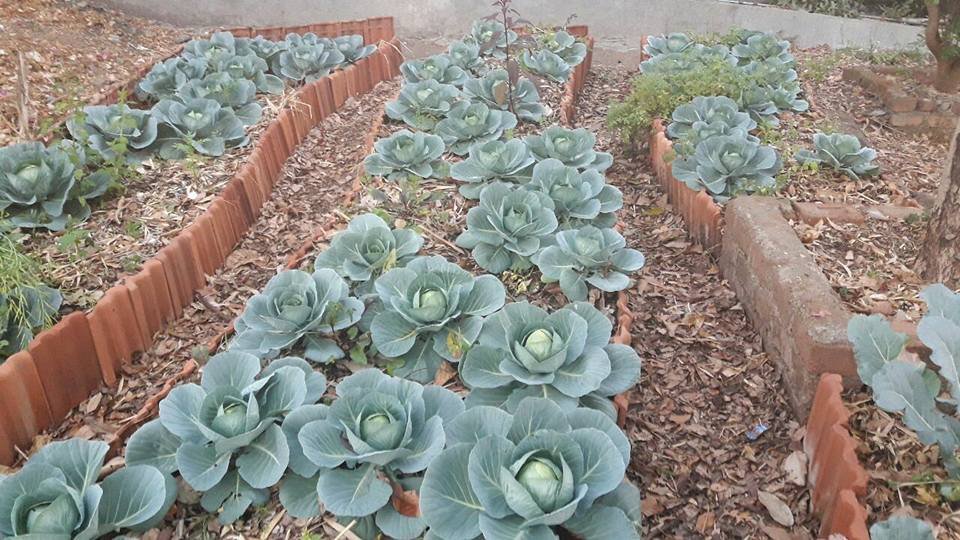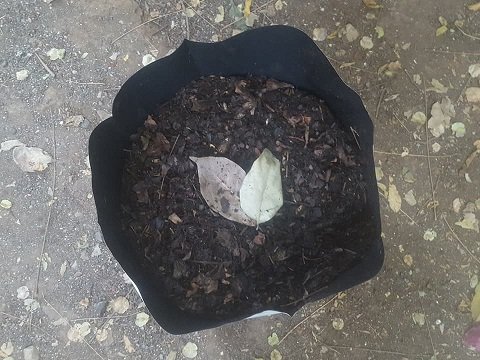Change Maker
Brown Leaf- Creating circular economy of dry leaves waste
Aditi Deodhar, founder of Brown Leaf
- Achint
- August 14, 2022
Be the change that you wish to see in the world.
Mahatma Gandhi Tweet
On our quest to meet changemakers, we saw this quote come to life, and our recent interaction with Aditi Deodhar, founder of the Brown Leaf initiative, was no different. Not only were these changemakers able to persuade their society, but they also bought equilibrium to the way of living. But, most importantly, they worked for the change they wished to see in the world.
Aditi Deodhar worked in the IT industry and completed her post-graduation in Mathematics. With her quest to solve a problem in her locality, she has managed to close the loop of bringing nature back to nature. Let’s look at her tale and see what lead to the creation of the Brown Leaf initiative.
When Aditi completed her post-graduate diploma in Natural Resources Conservation and Management from the Ecological Society, she began to see her surroundings differently. “Many things that didn’t bother me started bothering me now. And I wanted to take action,” said Aditi Deodhar. So, looking at the conditions of the rivers in Pune, she and her group started Jeevitnadi. But the problem didn’t end there—more things needed to be done.
Now and then, Aditi witnessed the burning of dry leaves in her society. She had seen the leaves fall from a monkey biscuit tree in her residence every autumn and was set to fire as a solution to get rid of them. Locals in her area likewise used the same method. Aditi couldn’t bear the sight of dry leaves being burnt. These incidents put Aditi in unrest.
She wondered what could be done. To end this method, she needed to figure out an alternative.
She requested the sweeper not to burn the leaves. However, a few days passed, and the heap of dry leaves kept getting bigger and bigger. Worried about what to do next, the sweeper confronted Aditi. In a state of doubt regarding what to do next, Aditi posted about the availability of leaves in her local Whatsapp group. Sujata Naphade, a resident of all the participants, asked if she could take the dry leaves herself.
That’s how she first got to know Sujata Naphade.
Aditi was happy and asked Sujata to pick the leaves from her society. Aditi prepared the gunny bags with dead leaves. The next day, Sujata took the leaves home in her car. Aditi’s problem has been temporarily solved the problem. But Aditi kept on wondering, ‘why did Sujata take the leaves? and how Sujata might be using the dead leaves.’ Aditi couldn’t contain her curiosity and kept thinking about it. Finally, she asked Sujata if she could visit her to see what she had accomplished with the brown leaves.
Aditi was baffled to learn that Sujata and her homegrown horticulture needed more leaves than the numerous gunny bags she had on hand. And that’s when the epiphany happened. Aditi realized that there are people who want brown leaves, and there are people who have an excess of them. ‘The classic demand and supply economics’ as she put it up.

All Aditi had to do was connect the dots. Aditi realized that the dry leaves were not a waste but a vast resource. Her research started by talking to people who farmed their food. Terrace gardeners lacked organic content, and purchasing soil was expensive. After her meetings, she concluded that getting dry leaves was a big problem for many farmers and garden owners. As a result, the Brown leaf initiative was born.
You can’t fight alone. It's a recipe for frustration for sure.
Aditi Deodhar, founder BrownLeaf Tweet
Brown leaf connects people who need dry leaves and those who have them in excess. While Aditi was working on connecting demand and supply, she also learned that many people were unaware that dry leaves could be used beneficially. As a result, she also worked on creating a guide which informed people all about dry leaves.
Moving further into the conversation, Aditi unfolded how saving dry leaves causes a ripple effect. She connected different aspects of the environment and gave us a holistic view of how this initiative is more significant than it seems.
We learned some new information about leaves during our conversation with Ms Aditi. These facts helped us get knowledgeable for sure but also provided us with a deep understanding of the ecological benefits of this initiative. So first, let’s look at why dry leaves are essential for our environment.

The falling of leaves is a natural process. The trees use a strategy to prevent themselves from getting dehydrated. Leaves have stomata, which help to get rid of excess water. They also aid the process of photosynthesis. But when the scorching summers come, and the soil gets deprived of water, trees shed their leaves to prevent more water from transpiring.
Hence, the falling of leaves is a defence strategy used by trees to survive in harsh conditions. This process is called evapotranspiration.
Firstly, in summer. When the ground remains covered with fallen leaves, they form a protective layer on the ground, preventing evaporation from the soil and thus retaining moisture.
Secondly, in the rainy season, leaves decompose and restore the nutrients in the soil, which is then helpful for the tree. This is a classic nature to nature cycle.
In nature, there is no concept of waste. Everything that births from nature go back to nature. It is because we’re living in concrete cities; dry leaves have no way of getting back to the environment. This breaks the circular loop, thereby leaving leaves to go to waste.
Because dry leaves are perceived as waste, it is usually mixed with garbage. In our conversation, Aditi pointed out how difficult it was for her to collect dry leaves. Wherever people see a heap of dry leaves, they perceive it as waste and dump garbage on it. After a few cycles, retrieving brown leaves from the trash becomes difficult.
Aditi carefully understood the entire cycle of solving the brown leaf problem. She pointed out that transporting vast quantities of leaves from one place to another is not sustainable. Instead, she insisted that one must try to solve the problem at the source. This philosophy led her to develop a three-way strategy to solve the problem. Let’s look at each of these in a bit of detail.
1. Mulching
2. Composting
3. Donating
The first is mulching. Mulching is the easiest of all. It involves crushing the dry leaves and putting them on top of the soil. Because these still have nutrients, the ground below gets moist and only aids in the growth of new plants.

The second is composting. It produces the richest organic content. However, many people avoid composting due to its limitations in the presence of insects. Aditi explained how these insects are mechanical decomposers and are essential for composting. However, other methods like mulching cover these limitations. To know all about composting, read our previous article here.

The last option is donating. Not all people have the comfort and zest of processing the dry leaves at the source though it is highly recommended. She suggested donating them to others who can utilize the brown leaves is also a considerable contribution to the solution. We weren’t aware of this option until Aditi enlightened us about how we could stop burning and instead start donating.

She prepared a YouTube series to help people understand the whole process. Here is the link to the complete playlist.
Brown leaf connects people who need dry leaves and those who have them in excess. Their forums allow proper communication between the two for hassle-free and easy exchange. Their core team works on maintaining the order of the community and creating essential learning guides. Aditi also talked about how people from other cities needed a similar model, and Brown Leaf provided them with knowledge and support to start something similar in their town.
“We got many requests from other cities, but because we could not cater to all, we encourage them to start taking the initiative in their cities. Many people did so. I’m not looking to monetize Brown Leaf. I want a good business model that makes things effective and helps us deliver the needful.” Said Aditi.

Aditi recognized the more comprehensive picture. She made use of the dried leaves in her residential lane as well as contributed to the city. From persuading garbage truck drivers to conducting a pilot study of the initiative with the assistance of the government, Aditi demonstrated how being helpless may spark curiosity, which then leads to a solution.
Segregation of dry leaves from garbage is a huge issue. A lot of awareness had to solve the problem at scale. With the help of sweepers, she managed to do so and remains optimistic about doing so in the future. Segregation at the source is the ideal solution.

With over 700 members in the group and over lakhs of gunny bags of dry leaves put to use, Brown Leaf is growing together. With plans under process, Brown Leaf is on its way to providing awareness and solutions. You can check out the guide published by Aditi and even contact her if you are interested in doing the same in your city. As emphasized by her, start on an individual level and then level it up.
